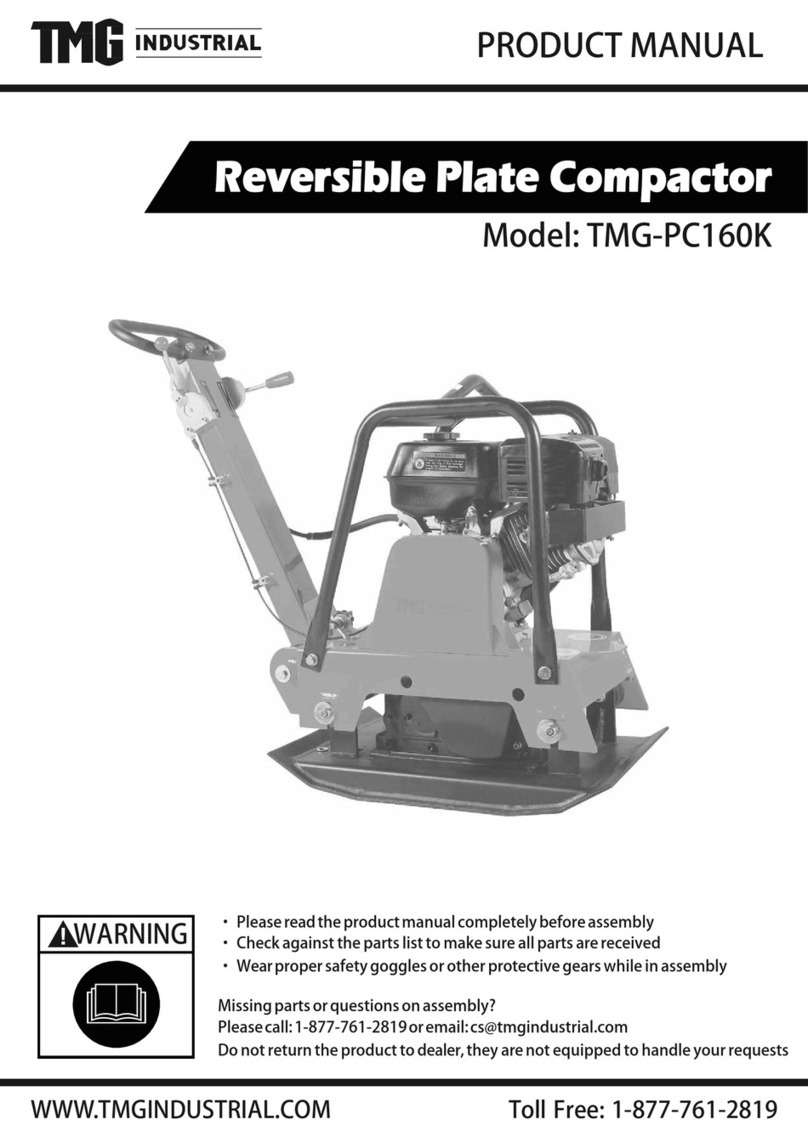
7
PLATE COMPACTOR SAFETY WARNINGS
WARNING! This appliance is not intended for use by persons (including children) with
reduced physical, sensory or mental capabilities, or lack of experience and knowledge, unless
they have been given supervision or instruction concerning use of the appliance by a person
responsible for their safety.
1) Never refuel while engine is running or hot. Fuel spilled on a hot engine could result in
a fire or explosion.
2) Use caution when handling petrol. Refuel in well-ventilated area. Do not overfill fuel
tank and do not spill fuel. Make sure tank cap is closed properly. Petrol is extremely
flammable and is explosive under certain conditions.
3) Never run the engine in an enclosed or confined area. Exhaust contains poisonous
carbon monoxide gas; exposure may cause loss of consciousness and may lead to death.
4) Be careful not to touch the muffler while it is hot. To avoid severe burns or fire
hazards, let the engine cool before transporting or storing it indoors. The muffler
becomes very hot during operation and remains hot for a while after stopping the engine.
Exhaust may contain chemicals that may cause cancer or reproductive harm.
5) Keep hands, fingers and feet away from the base plate. Grip the handle of the plate
compactor firmly with both hands.
6) Always operate the machine from behind, never pass or stand in front of the machine
when the engine is running.
7) Never place tools or any other item under the plate compactor.
8) If the unit strikes a foreign object, stop the engine, disconnect the spark plug,
thoroughly inspect the machine for any damage, and repair the damage before restarting
and operating the machine.
9) Do not overload the machine capacity by compacting too deep in a single pass or at too
fast a rate.
10) Never operate the unit at high transport speeds on hard or slippery surfaces.
11) Exercise extreme caution when operating on or crossing gravel drives, walks, or
roads. Stay alert for hidden hazards or traffic.
12) Do not carry passengers.
13) Never leave the plate compactor unattended while the engine is running.
14) Always stop the engine when walking from one location to another.
15) Stay away from the edge of ditches and avoid actions that may cause the plate
compactor to topple over.
16) Always ascend slopes carefully to prevent the plate compactor from toppling over
onto the operator.
17) Always park the unit on a firm and level surface and shut the plate compactor off.
18) Limit the hours of operation and take periodic breaks to minimize repetition and
reduce exposure to vibration to your arm. Reduce the speed and force in which you
do the repetitive movement.
Children should be supervised to ensure that they do not play with the appliance.



























